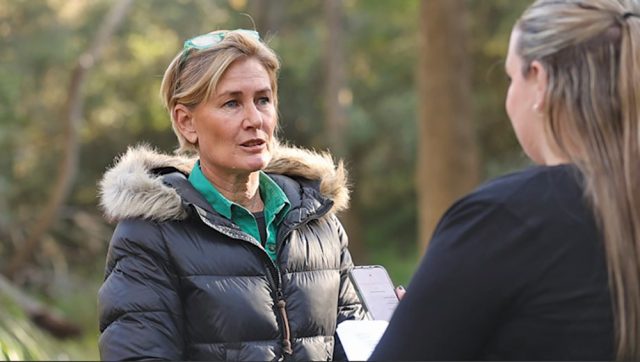The longevity of an already small population of platypus within Penrith is under threat, with a group committed to restoring their environment asking for community help.
The Mulgoa Valley Landcare Group has been restoring and protecting Penrith’s natural environment for 30 years, and they have recently shifted their focus onto protecting and restoring the habitat of local platypus.
Their work has seen them investigate the amount of platypus that live within the Penrith creeks and tributaries, believed to be just 12, and work to restore their environment.
“We’ve been awarded some funding to support platypus habitat restoration and typically that just means removing weeds and making the creek line vegetation community much healthier which gives us a diversity of insects, which gives the platypus’ a diversity of water bugs to eat,” Mulgoa Valley Landcare Group Coordinator Lisa Harrold said.
“We know the platypus will visit if they have lots of water bugs to forage for.”
Within the last two years five platypuses have been found dead due to man made causes like littering.
“We know that five deceased platypuses have been found in the Nepean River around the Weir area just in the last 18 months,” Harrold said.
“Four out of those five platypus had become trapped and entangled in discarded fishing line…
“Another platypus in the Nepean River was found with a simple hair elastic around its bill…
“Rubbish is a thing that really impacts aquatic ecosystems.”
Urban development is another major factor that minimises the habitat of local platypuses and while developments can’t be fully avoided, there are ways to mitigate the environmental impact humans have on the native flora and fauna.
“I think we do really bad things to our waterways,” Harrold said.
“We tend to not leave sufficient bush corridors on each side of the creeks and therefore we set up situations where you might have exposed creek banks, the wrong type of vegetation, you might get a lot of erosion and sedimentation in the creeks and simply the velocity of water.
“If we get a rain event, and you’ve got an urban development nearby, the velocity of water coming in from those hard stand areas into creek systems and washing through taking soil and debris and the right sort of feature that a platypus would search for in a creek, that vanishes with the more growth we have and the more development we have.”
It’s important to prioritise the health of the natural waterways within the Penrith area, given the natural ecosystem helps reduce the pollutants within the waterways and will do well into the future.
“The bushland beside creeks acts like a filter,” Harrold explained.
“It slows the runoff of water down, but it actually filters pollutants out as well.
“So, if we don’t have a healthy, strong corridor of bushland on each side of our waterways, we don’t get that natural filtration system occurring.”

Emily Chate
Emily Chate joined The Western Weekender in 2024, and covers local news - primarily courts and politics. A graduate of the University of Wollongong, Emily has contributed to The Daily Telegraph and worked as a freelance journalist.

